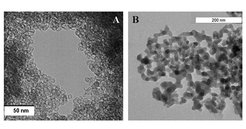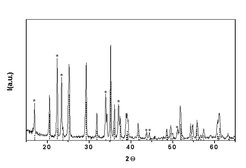Nanoparticles for Energy Harnessing
It is an actual trend in material science to analyze new pathways towards nanomaterials which improve the performance of Li-batteries, reducing at the same time cost and toxicity. At the present, the most promising candidate for substitution seems to be iron silicates and iron phosphates, followed by the more robust but more challenging corresponding Mn-derivates. Indeed, those systems exhibit a very favorable Li-capacity and cell voltage, but a poor electronic conductivity. The latter negative aspect can however be compensated e.g. by reducing structural size.
Nanosized LiyMnSiOx and LiMnPO4 have been synthesized by a hydrothermal route. Simply by changing parameters such as metal precursors and/or template, high surface area LiyMnSiOx with different morphology and sizes were prepared, in particular hollow spheres and plate-like nanoparticles. In case of LiMnPO4, high crystalline nanocrystals were prepared.

TEM images of LiyMnSiOx in form of hollow spheres (A, using Mn(CH3COO)2 and Ludox) and plate-like nanoparticles (B, using MnCl2 and cab-o-sil).

XRD patterns of LiMnPO4. For comparison, the calculated pattern is also reported (dotted line). Marked peaks are attributed to Li3PO4.

